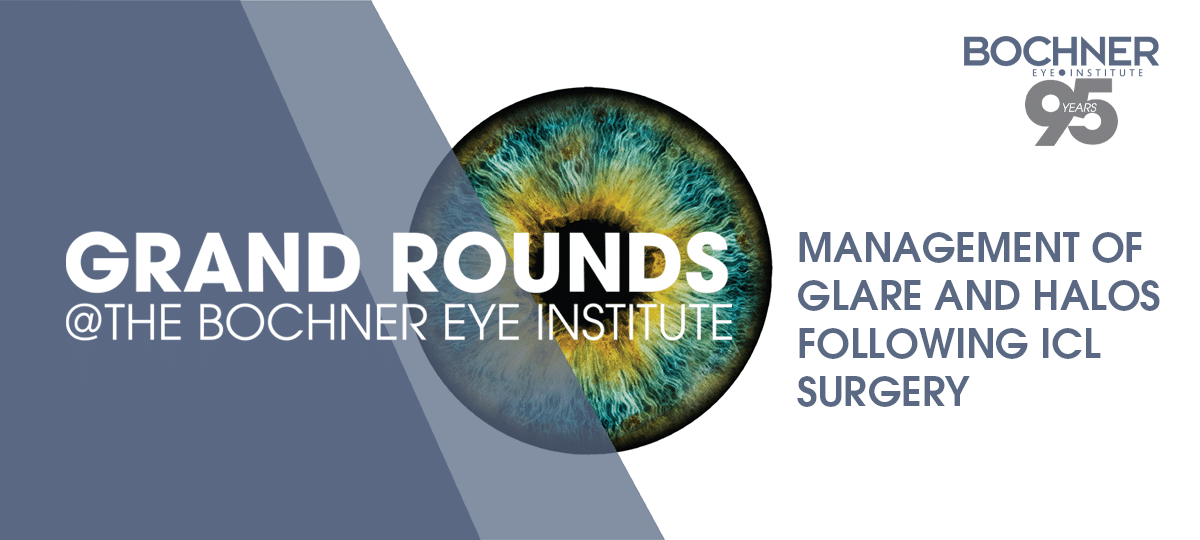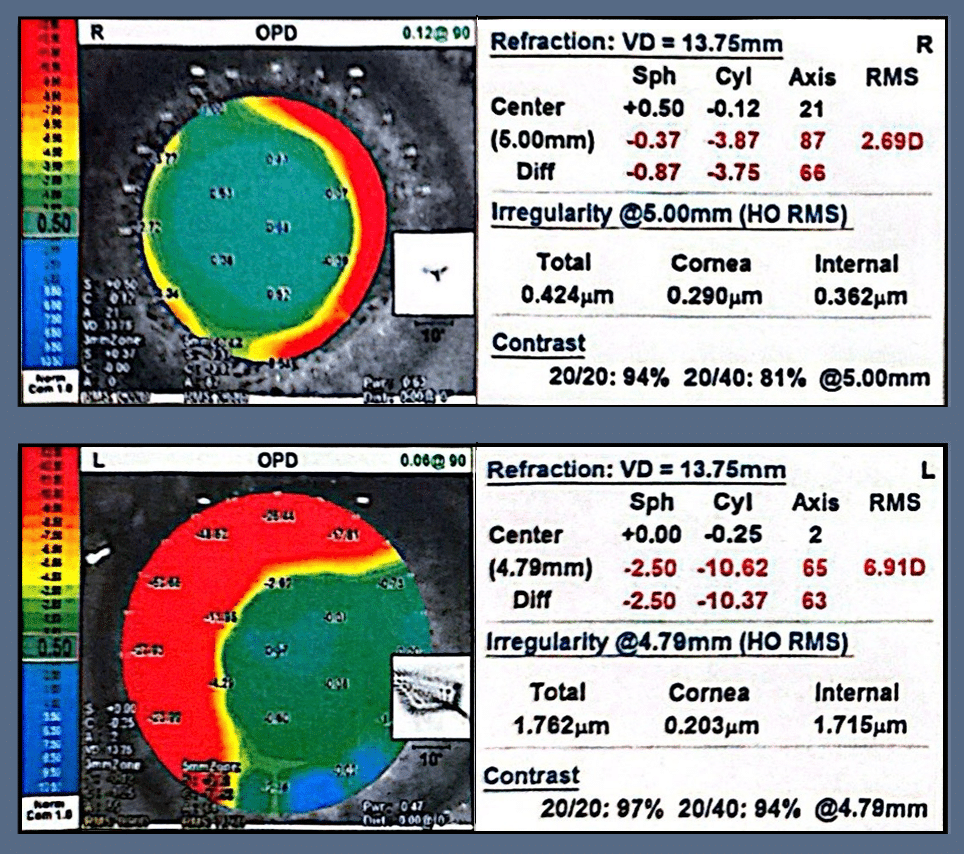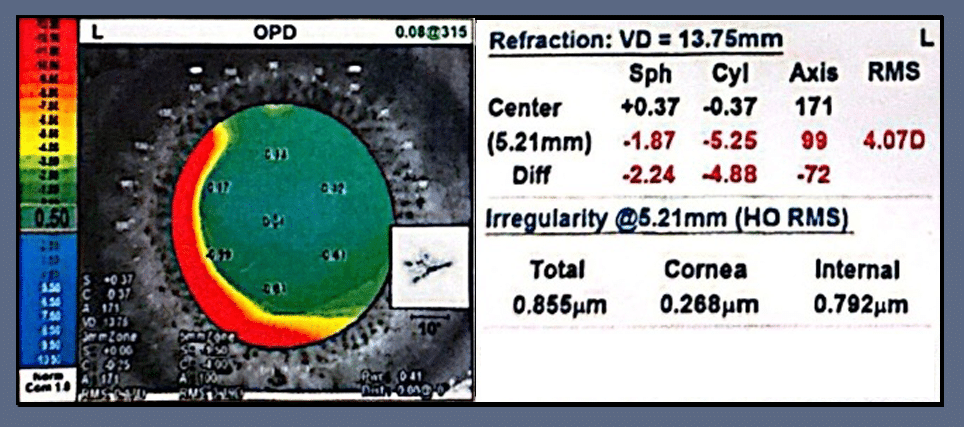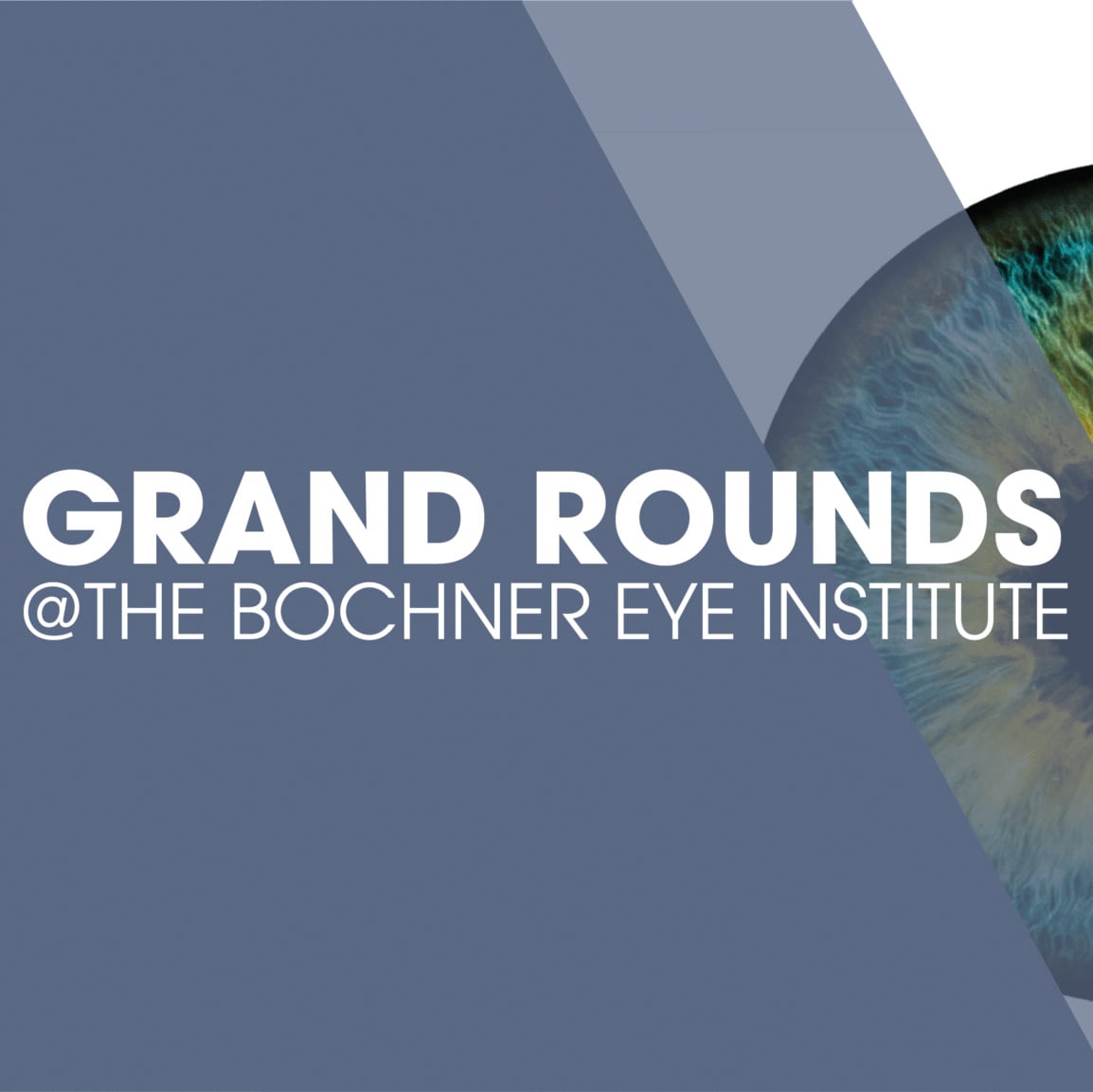
CASE OVERVIEW
A 44-year-old optometrist expressed interest in refractive surgery. His refractive error was -8.25 in the right eye, achieving 20/20 corrected visual acuity, and -9.00 -0.50 × 180 in the left eye, also achieving 20/20 corrected visual acuity. Slit-lamp and fundus examinations were unremarkable, and computerized topography results were normal.
The risks and benefits of laser vision correction and the implantable contact lens (ICL) procedure were discussed. The patient opted for ICL surgery to achieve optimal distance vision.
SURGICAL OUTCOME
The ICL procedure was performed without complications. However, at the one-week follow-up, the patient reported glare and halos in his left eye at night, despite an uncorrected visual acuity of 20/20 in both eyes.
An OPD refractive power map revealed that the right ICL was well-centered, while the left ICL was slightly displaced inferotemporally. The map indicated no significant refractive error in the green areas, while red areas highlighted regions of significant refractive error.

The patient tried Alphagan to decrease pupil size at night and his symptoms disappeared. This indicated that the central port of the EVO ICL was not responsible for his symptoms.
Repositioning of the left ICL was performed under topical anesthesia without difficulty.
POST-REPOSITIONING OUTCOME
One day after the repositioning, the patient reported a significant improvement in visual quality, with halos and glare resolved. A follow-up OPD refractive power map confirmed improved alignment and optical quality.

LONG-TERM OUTCOME
Three years post-surgery, the patient remains highly satisfied with his visual outcomes and optical quality.
KEY LEARNING POINTS:
1. ICL AS A REFRACTIVE SURGERY OPTION:
ICL is an excellent choice for correcting high myopia, offering stable results without regression or induction of significant higher-order aberrations.
2. GLARE AND HALOS WITH EVO ICL DESIGN:
Glare and halos may occur due to the central port of the EVO ICL design. These symptoms often improve over time with neuroadaptation.
3. DISPLACEMENT-RELATED GLARE / HALOS:
In rare cases, glare and halos may result from mild ICL displacement relative to the entrance pupil. OPD refractive power mapping can confirm displacement and proper centration after repositioning.


